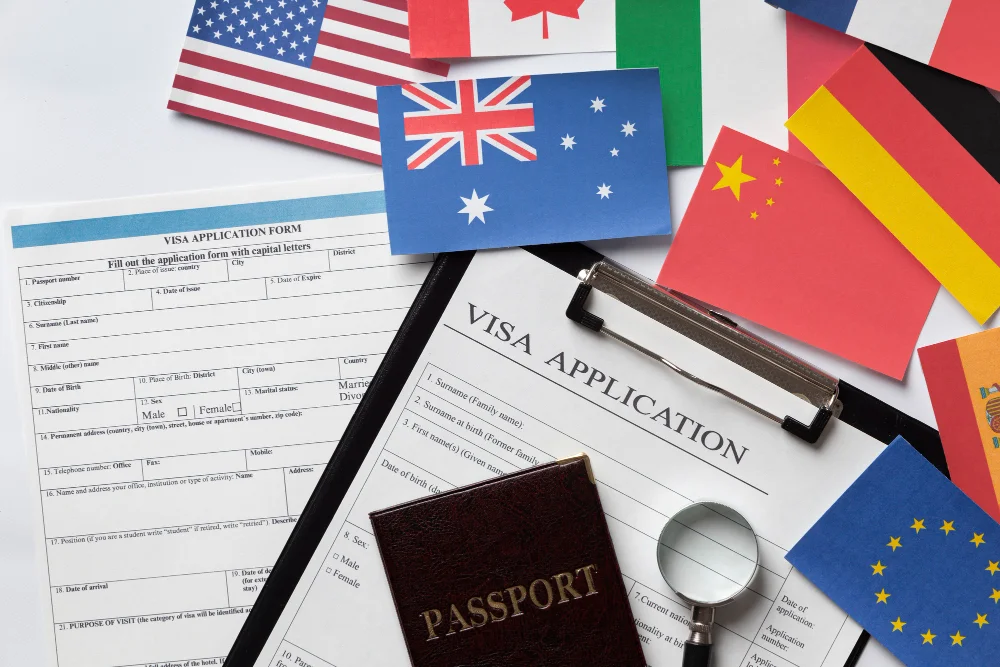Travelling to Australia is a dream for many Americans, whether it’s for exploring the Outback, diving into the Great Barrier Reef, or soaking in the vibrant city life of Sydney. Thankfully, the process of securing an Australia visa for US citizens is quite simple and can be completed online within minutes. But knowing which visa to apply for and what to prepare can make all the difference in ensuring a stress-free trip.
The Australian government offers different types of visas based on your reason for travel, including tourism, business, study, and short-term work. For most short visits, US passport holders are eligible for the Electronic Travel Authority (ETA), which is fast, affordable, and easy to obtain. However, travellers must still meet specific criteria and follow the correct application process to avoid any last-minute issues.
Understanding the latest visa requirements, eligibility rules, and travel conditions is essential before you book your flight. This guide provides clear, up-to-date, and easy-to-understand information tailored to the Australian visa for US citizens, helping you prepare confidently for your Australian adventure. Whether it’s your first visit or a return trip, knowing the proper steps will save time, money, and unnecessary stress.
Types of Australian Visas for US Citizens

When it comes to visiting Australia, US citizens have a primary option tailored for short-term travel, the Electronic Travel Authority (ETA). Although the eVisitor visa is often mentioned alongside the ETA, it’s essential to know that it does not apply to US passport holders. Understanding the difference between these visa types helps avoid confusion and ensures a smooth application process.
Electronic Travel Authority (ETA) – Subclass 601
The ETA is the most suitable visa for US citizens visiting Australia for tourism or short business trips. It allows multiple entries within 12 months, with each stay limited to 90 days. The application process is fully digital and usually approved quickly, making it a convenient choice for travellers seeking flexibility and ease of access.
eVisitor Visa – Subclass 651
This visa is frequently mistaken as an option for Americans, but it is only available to citizens of certain European countries. US citizens are not eligible to apply for the eVisitor visa and should instead focus on securing an ETA to enter Australia for short-term purposes.
Basic Eligibility & Requirements for the Australia Visa for US Citizens
Before applying for an Australian visa, US citizens must meet specific eligibility criteria. A valid US passport is mandatory, and applicants must have a clean criminal record. Any history of legal issues or visa violations may lead to rejection. Additionally, travellers must be visiting for acceptable purposes such as tourism or business, with no intention of working or staying long-term under the ETA.
In terms of application requirements, the process is straightforward. You’ll need a working email address, a valid passport, and a debit or credit card to pay the visa fee. In some cases, the Australian immigration authorities may request biometric data, health exams, or character checks based on your travel or medical history. Preparing these in advance can help avoid unnecessary delays.
Step-by-Step Guide to Applying for an Australia Visa for US Citizens

Applying for an Australian visa for US citizens is mainly done online. The steps are simple and take only a few minutes.
First, visit the official Australian immigration site or download the Australian ETA app. Fill in your details, upload your documents, and pay the application fee (usually around $20). Processing times vary but are typically fast, within minutes to a few days.
Here are the simplified steps:
- Ensure your passport is valid for at least six months
- Use the official ETA app or immigration site
- Fill out personal and travel information
- Upload necessary documents if requested
- Pay the required fee
- Wait for email confirmation or updates
How Long Can US Citizens Stay in Australia?
US citizens holding an Electronic Travel Authority (ETA) can stay in Australia for up to 90 days (3 months) per visit. The ETA remains valid for 12 months from the date of approval, allowing multiple entries during that period. However, each visit must not exceed 90 days, and travellers must leave the country before their stay expires to comply with immigration rules.
If you’re already in Australia on an ETA and wish to stay longer, unfortunately, you cannot extend your ETA while inside the country. To remain legal, you must apply for a different visa type, such as the Visitor Visa (Subclass 600), which may offer longer stay durations. It’s recommended to apply for the new visa before your current stay ends to avoid penalties or visa issues in future travels.
Cost of an Australia visa for US Citizens

For most US travellers, the cost of applying for an Electronic Travel Authority (ETA) is relatively low. The official fee is around AUD 20, which covers the entire application process if submitted through the Australian government’s official channels. This makes the ETA one of the most affordable visa options for short-term travel.
However, if you choose to apply through third-party services or travel agents, additional service charges may apply. These extra fees can significantly increase your total cost without offering any real benefits. To save money and ensure accuracy, it’s highly recommended to apply directly via the official ETA mobile app or immigration website.
Common Reasons for Visa Rejection
Although most US citizens are approved quickly for an Australian ETA, some applications do get rejected due to avoidable errors or disqualifying factors. Understanding the most common reasons for rejection can help you prepare a clean and accurate application, reducing the risk of delays or denials.
Why Your Visa Might Be Denied
- Providing incorrect or mismatched personal information
- Having a criminal record or pending legal issues
- Failing to meet Australia’s health or character standards
- Uploading false, expired, or manipulated documents
Travel Tips for US Citizens Visiting Australia
Once your visa is approved, you’re free to explore Australia’s stunning landscapes, iconic cities, and unique wildlife. Before you fly, keep these in mind:
Health Insurance:
Healthcare is expensive in Australia for tourists. US citizens are advised to get travel insurance covering medical emergencies.
Customs & Biosecurity:
Australia has strict biosecurity laws. Avoid bringing food, plants, or animal products unless declared.
Currency and Connectivity:
The Australian Dollar (AUD) is the local currency. Free Wi-Fi is available in major cities, but rural areas may have limited coverage.
Things You Should Not Do While in Australia
While visiting Australia, US citizens need to follow the country’s laws and visa conditions strictly. Even minor violations can result in penalties, visa cancellation, or being barred from future entry. Staying informed and respectful of Australian rules will ensure a safe and hassle-free trip.
Key Things to Avoid
- Do not overstay your visa under any circumstances
- Avoid taking up paid or unpaid work without the correct visa
- Follow all local laws, including road safety and public behaviour
- Don’t ignore visa expiry notices or warnings from immigration authorities
Final Thought on Australia Visa for US Citizens
In summary, getting an Australian visa for US citizens is relatively easy, especially if you’re visiting for tourism or business. The Electronic Travel Authority offers a convenient, low-cost way to explore Australia’s beauty and culture without legal hassles. Always ensure your documents are in order, stay informed, and respect Australia’s laws.
Planning ahead and understanding visa requirements is the key to a smooth travel experience. Whether you’re hiking through the Outback or enjoying a flat white in Sydney, a valid visa keeps your journey stress-free. Apply early, keep a copy of your visa confirmation, and enjoy everything Australia has to offer.
From coastal cities to ancient rainforests, the adventure is worth it, just make sure your paperwork is ready before takeoff!










